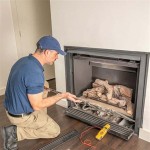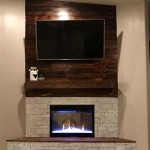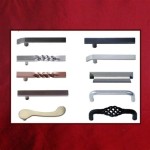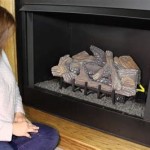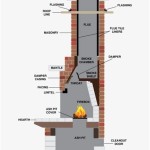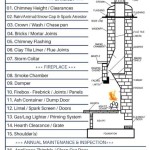Ledge Stone Fireplace: Aesthetics, Installation, and Considerations
A ledge stone fireplace represents a visually appealing and structurally sound addition to any residential or commercial space. The integration of natural or manufactured stone, carefully arranged to create a stacked ledge effect, provides a rustic yet sophisticated focal point. Understanding the nuances of ledge stone fireplaces, including design variations, installation procedures, and maintenance requirements, is crucial for ensuring a successful project.
Ledge stone, characterized by its thin profile and textured surface, offers a versatile material for cladding a fireplace. Unlike traditional brick or full-sized stone, ledge stone allows for a relatively lightweight veneer installation, minimizing the need for extensive structural modifications. This characteristic makes it a suitable option for both new construction and remodeling projects.
Design and Material Selection
The aesthetic appeal of a ledge stone fireplace is heavily influenced by the choice of materials and design layout. Ledge stone is available in a wide range of natural stones, including slate, quartzite, limestone, and travertine. Each stone type possesses unique color variations, textures, and patterns that contribute to the overall character of the fireplace. Manufactured stone, also known as faux stone or cultured stone, offers a more budget-friendly alternative, replicating the look of natural stone with consistent color and texture.
The arrangement of ledge stone can further enhance the visual impact. Horizontal stacking, the most common configuration, creates a sense of width and linearity. Vertical stacking, conversely, emphasizes height and adds a contemporary touch. Random patterns, incorporating varying sizes and shapes of stone, offer a more organic and natural aesthetic. The grout joint, the space between individual stones, also plays a significant role in the overall design. Tight joints create a seamless appearance, while wider joints expose the texture and color of the mortar.
Beyond the stone itself, the surrounding elements of the fireplace contribute to its aesthetic integration within the room. The size and shape of the firebox opening, the design of the mantel, and the surrounding wall treatment all influence the overall visual harmony. A well-designed fireplace seamlessly blends with the existing architectural style and interior décor, enhancing the ambiance and value of the space.
Installation Process and Structural Considerations
Proper installation is paramount to ensuring the structural integrity and longevity of a ledge stone fireplace. The installation process involves several key steps, beginning with surface preparation. The surface to which the ledge stone will be applied must be clean, dry, and structurally sound. Concrete or masonry surfaces generally provide a suitable substrate. Wood framing, if present, requires the application of a cement backer board, such as HardieBacker or Durock, to provide a fire-resistant and moisture-resistant surface.
Mortar selection is another critical aspect of the installation process. A high-quality polymer-modified mortar specifically designed for stone veneer is essential. This type of mortar provides superior adhesion and flexibility, accommodating the natural expansion and contraction of the stone. The mortar should be mixed according to the manufacturer's instructions and applied evenly to the back of each stone. The stones are then carefully placed on the prepared surface, ensuring proper alignment and spacing. The use of spacers can help maintain consistent grout joint widths.
Addressing structural considerations is essential, particularly when installing ledge stone on existing fireplaces. The added weight of the stone veneer can place significant stress on the underlying structure. It is crucial to assess the load-bearing capacity of the foundation and framing to ensure it can adequately support the weight of the stone. In some cases, reinforcement may be necessary. In addition, proper ventilation and clearance around the firebox are vital for safe operation. Building codes typically specify minimum clearances between the fireplace and combustible materials. Consulting with a qualified structural engineer and adhering to local building codes are crucial for a safe and compliant installation.
For gas fireplaces, proper gas line installation is paramount. A qualified gas technician should connect the gas line to the fireplace unit, ensuring all connections are secure and leak-free. Carbon monoxide detectors are essential in any home with a gas fireplace to alert occupants to the presence of this odorless and potentially lethal gas.
Maintenance and Long-Term Care
Maintaining a ledge stone fireplace involves regular cleaning and periodic sealing. Dust and debris can accumulate on the surface of the stone, diminishing its aesthetic appeal. Regular dusting with a soft brush or vacuum cleaner attachment helps remove loose particles. For more stubborn stains, a mild soap and water solution can be used. It is crucial to avoid harsh chemicals or abrasive cleaners, as they can damage the surface of the stone.
Sealing the ledge stone provides an additional layer of protection against water damage, stains, and efflorescence. Efflorescence, the white, powdery deposit that sometimes appears on masonry surfaces, is caused by the migration of salts to the surface. A penetrating sealer specifically designed for natural stone helps prevent water absorption and reduces the risk of efflorescence. The frequency of sealing depends on the type of stone and the exposure to moisture. Generally, resealing is recommended every one to three years.
Inspecting the fireplace for cracks, loose stones, or mortar deterioration is essential for maintaining its structural integrity. Small cracks can be repaired with patching mortar. Loose stones should be reattached with fresh mortar. Addressing these issues promptly prevents further damage and ensures the longevity of the fireplace. It's also advantageous to have the chimney inspected annually by a qualified professional to verify proper drafting and ensure there are no obstructions. Regular maintenance not only preserves the aesthetic appeal of the ledge stone fireplace but also ensures its safe and efficient operation for years to come.
Choosing the right ledge stone for your fireplace also depends on your climate. Stone that is subjected to freezing and thawing cycles can crack and spall if it's not the correct type. Certain types of porous stone are more susceptible to water damage than others, so be sure to consider your local weather when selecting materials. Similarly, the mortar used to hold the stone in place must be able to withstand extreme temperatures and weather changes. High-quality mortar that is designed for outdoor use is usually the best choice, even for interior fireplaces, as it will provide better protection against cracking and crumbling.
Lighting can significantly impact the aesthetic of a ledge stone fireplace. Consider incorporating recessed lighting above the fireplace to highlight the texture and color variations of the stone. Spotlights can also be used to create dramatic shadows and accentuate specific features. Dimmers allow you to adjust the intensity of the lighting to create different moods and atmospheres. The placement and type of lighting should complement the overall design of the room and enhance the visual appeal of the fireplace.
Integrating your ledge stone fireplace into your existing heating system is another option to consider. While many are purely decorative, some can be connected to a central heating system to provide supplemental heat to the home. This can be a cost-effective way to reduce heating bills, particularly during colder months. However, it's crucial to ensure that the fireplace is properly installed and ventilated to prevent any safety hazards. Consulting with a qualified HVAC technician is recommended before making any modifications to your heating system.

A Few Things About Ledgestone
Ledgestone Fireplaces Everything You Need To Know Realstone

Beautiful Natural Stone Fireplace Featuring Iron Mountain Sawn Ledge Stacked Fireplaces

Hudson Ledgestone Fireplace Residential Fond Du Lac Natural Stone

Fireplace Makeover Featuring Ledgestone The Cultured Stoners

Ledgestone The Fireplace Professionals

The Floor To Ceiling Echo Ridge Country Ledgestone Wrapped Fireplace Is Topped By A Custom Made Mantel In She Brick Makeover Home

Ledgestone Fireplace Gallery North Star Stone

Designing With Ledgerstone

Modern Ledgestone Fireplace Features In High End Homes Stoneyard

